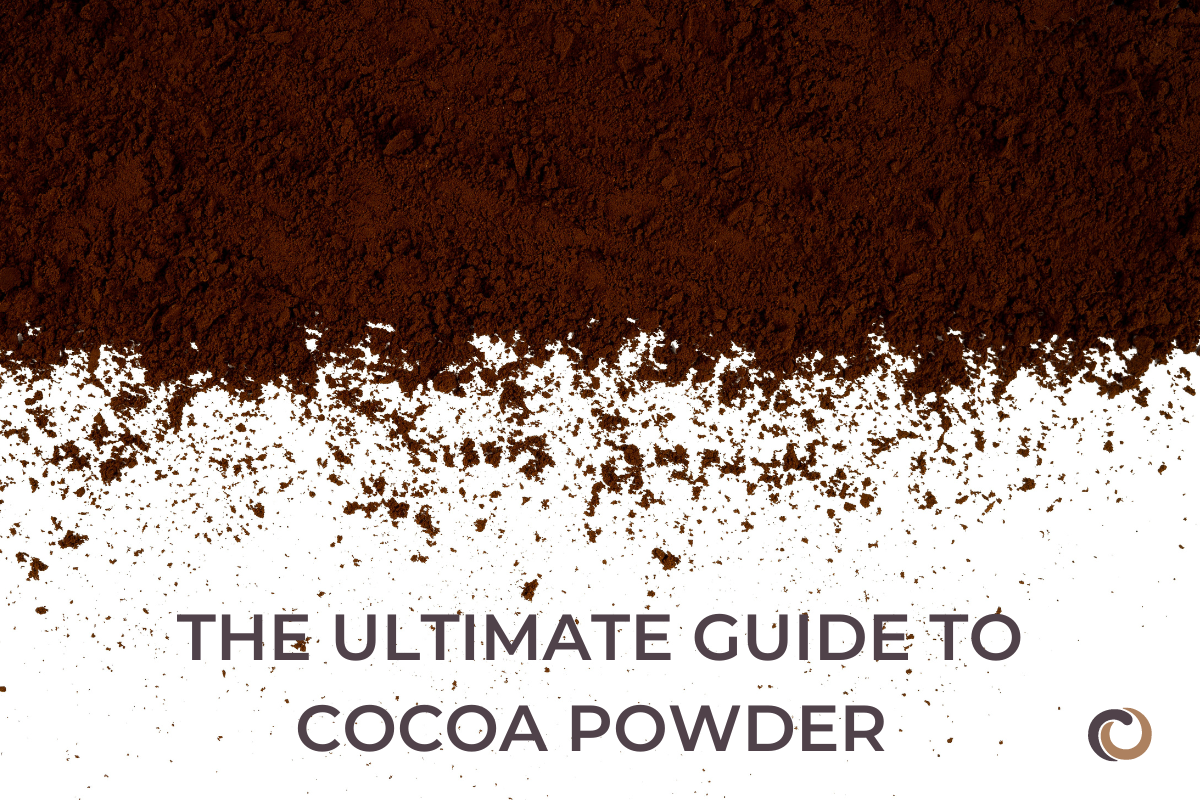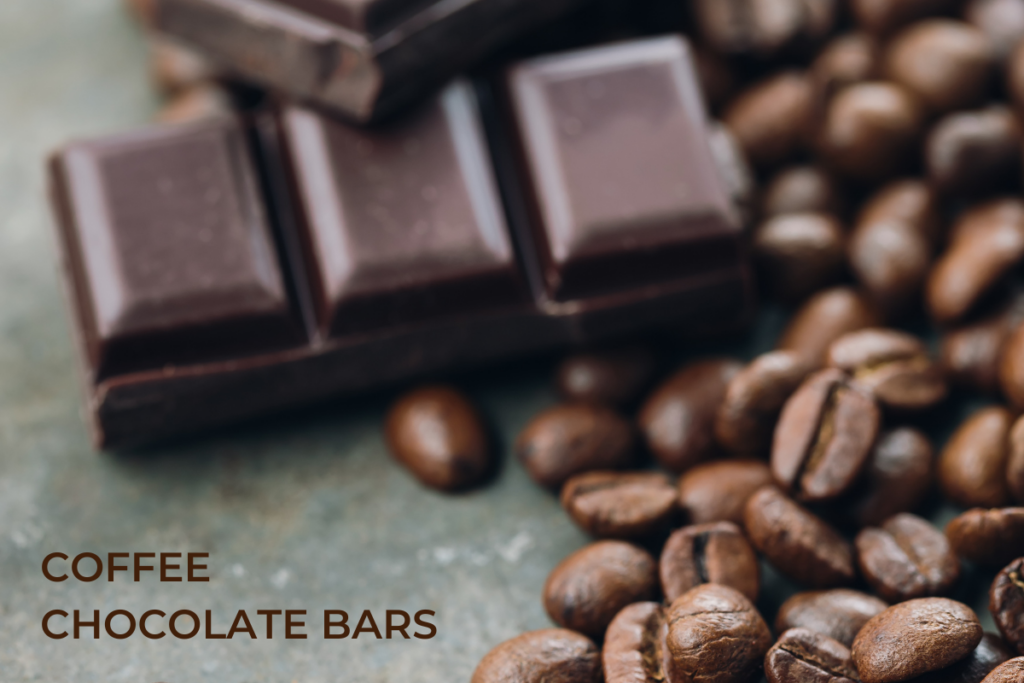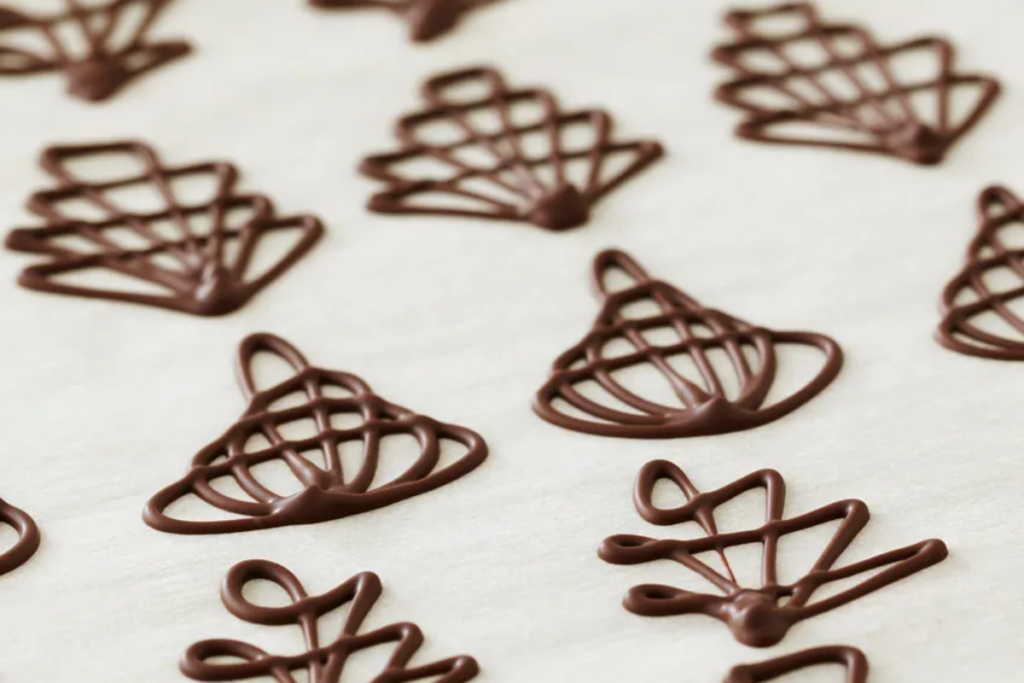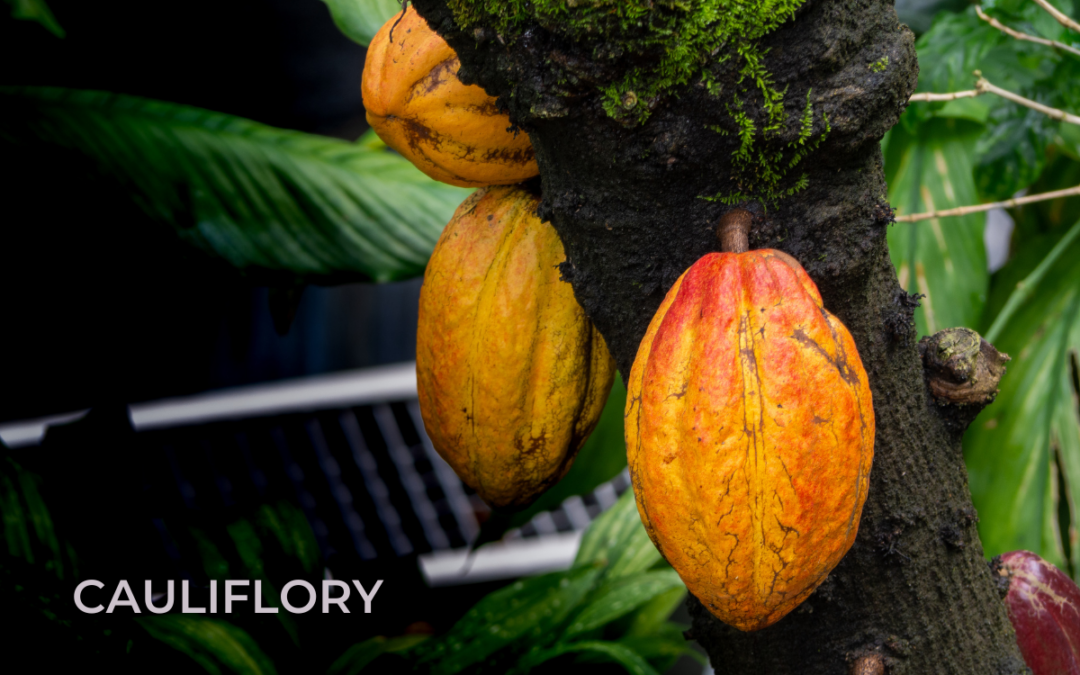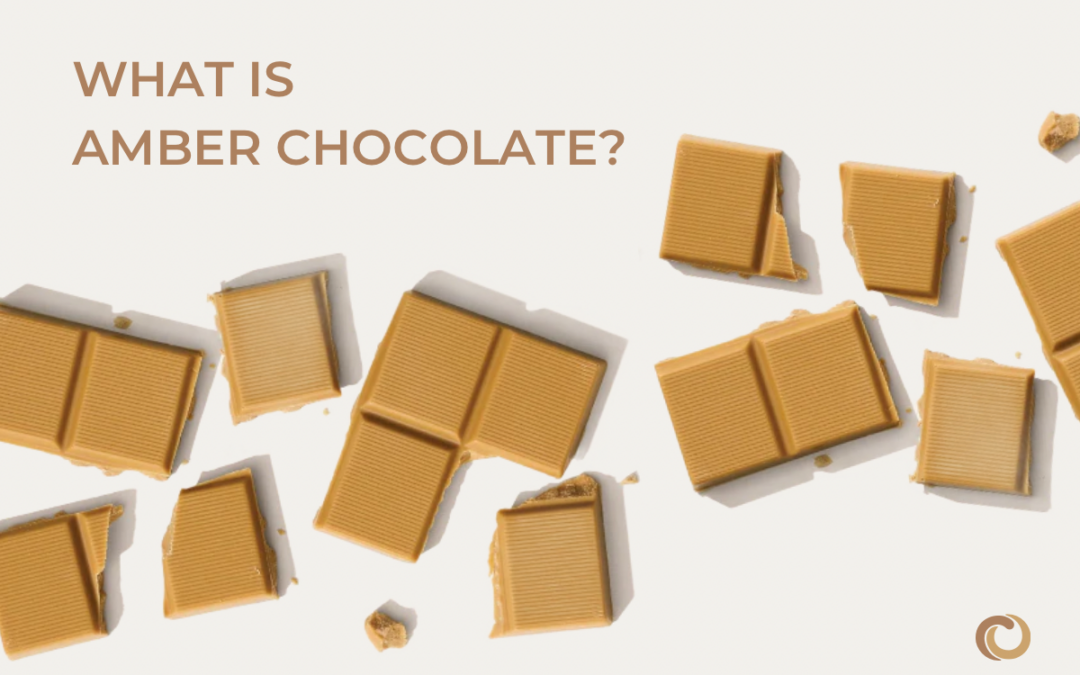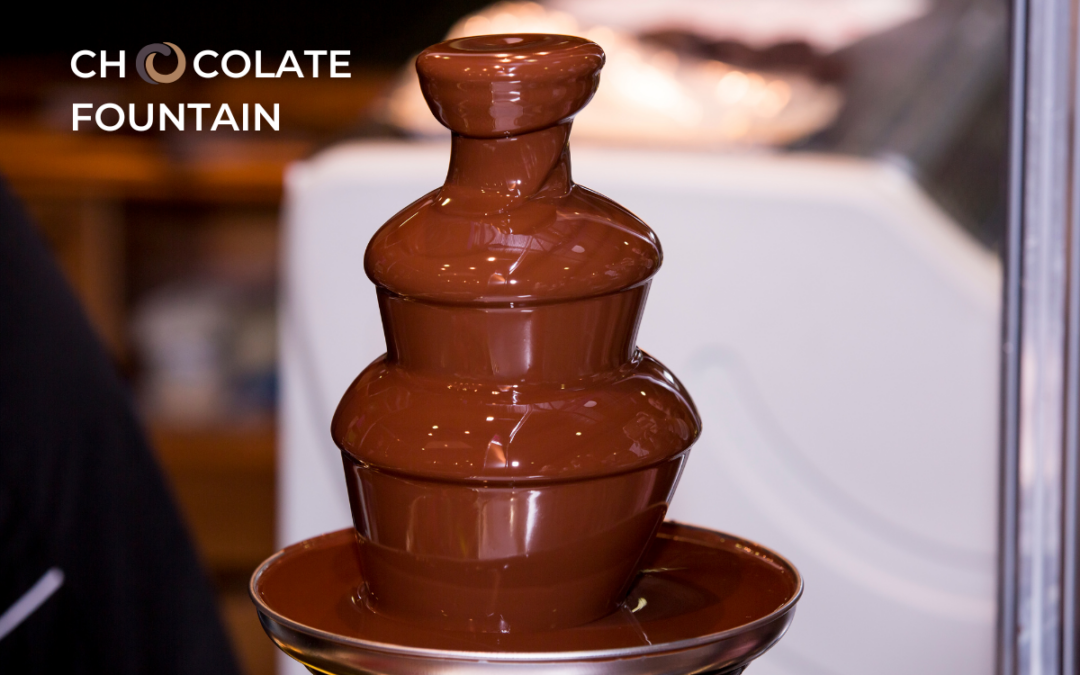Cocoa powder is a key ingredient in a wide range of recipes, from rich desserts to cozy drinks. Have you ever considered where it comes from and how it’s made? And with so many options and uses, it can be tricky to know which type is best for your needs. This ultimate guide to cocoa powder will help you navigate the different varieties, show you how to use them properly, and offer tips to get the most out of your cocoa powder in the kitchen. Let’s explore the world of cocoa and take your chocolate creations to the next level!
What is cocoa powder?
In short, cocoa powder is made from cocoa beans. The beans used to make cocoa powder have already been fermented, dried, roasted, and then ground up. The ground up cocoa bean slurry is then pressed to remove most of the cocoa butter, leaving behind a solid, black cocoa puck. This solid puck is finely ground to produce unsweetened cocoa powder. So, in essence, cocoa powder is made from defatted cocoa beans (cocoa beans are composed of about half cocoa butter and half cocoa solids).
This rich chocolate-flavored ingredient is essential in baking and cooking, adding deep cocoa notes to various recipes. There are two main types of cocoa powder, natural and Dutch-processed, each offering unique qualities that can affect the taste and texture of your dishes or baked creations.
Brief history of cocoa powder
The story of cocoa powder dates back to ancient civilizations such as the Mayans and Aztecs, who cultivated cocoa beans and used them to create a bitter, frothy drink called “xocolatl.” This beverage, considered sacred, was an important part of cultural and religious ceremonies.
Cocoa made its way to Europe in the early 16th century when Spanish explorers, including Hernán Cortés, brought cocoa beans from the New World. European aristocrats quickly adopted it, sweetening the drink with sugar (and eventually mixing it with milk).
A major development occurred in 1828 when Dutch spice and coffee merchant Caspardus van Houten invented a method to efficiently press cocoa beans (using a hydraulic press), extracting most of the cocoa butter and leaving behind a dry cake that could be ground into cocoa powder. His son, Dutch chemist Coenraad Johannes van Houten, later introduced “Dutching,” a process that treats cocoa powder with alkaline salts to neutralize its acidity, creating a smoother, milder flavor.
These innovations by the Van Houten family made chocolate more affordable and widely available, leading to the mass production of chocolate bars and other chocolate-based treats. As a result, cocoa powder became a beloved ingredient in baking, cooking, and beverages, securing its place as a staple in kitchens around the world.
How cocoa powder is made: From tree to powder
Cocoa powder is made through a process that begins with the harvesting of cocoa pods, the fruit of the cacao tree.
Harvesting: Cocoa beans are extracted by hand from the cacao pods, after cracking these football shaped fruit open. The extracted beans are covered in a white, sweet pulp which is critical for fermentation.
Fermentation: The next step is fermentation, where the beans and pulp are left to ferment for several days to a week, typically in wooden boxes or covered heaps. This fermentation process is crucial as it enhances the flavor of the beans and helps reduce their natural bitterness.
Drying: After fermentation, the beans are spread out to dry in the sun for a week or two. This process reduces the moisture content and further enhances the chocolate flavor.
Roasting: After drying, the beans are roasted to develop their deep chocolate flavor. The roasting process can vary in temperature and time, depending on the desired flavor profile. Roasting also helps loosen the outer shell of the beans, making it easier to remove.
Cracking and winnowing: The roasted beans are then cracked to separate the outer shell from the inner nib, which is the edible part of the cocoa bean. The process of winnowing is then used to remove the shells, leaving only the pure cocoa nibs.
Grinding: The cocoa nibs are then ground into a dense, oily paste called cocoa mass or chocolate liquor. As long as the mass is kept warm, the fat (aka cocoa butter) released from the cells of the cocoa bean will remain in liquid form, which is essential to the next step of the process.
Pressing: The warm cocoa mass is pressed using a hydraulic press, which squeezes out the cocoa butter, separating it from the cocoa solids. When the cocoa butter is extracted, the remaining cocoa solids are compressed into a hard, solid block. This block is then ground into a fine powder, producing cocoa powder. At this point, the cocoa powder can either be left as is or treated through a process called Dutching to alter its flavor and color.
Dutch processing (Optional): Dutch-processed, or alkalized, cocoa powder undergoes treatment with an alkaline solution to reduce its natural acidity. This process results in a richer, darker color and a smoother, milder flavor compared to natural cocoa powder. It also allows it to dissolve in liquids much more easily.
Types of cocoa powder
There are several types of cocoa powder, each with distinct characteristics and uses.
Natural cocoa powder: This is the most common cocoa powder, made from roasted cocoa beans that are ground and pressed to remove much of the cocoa butter. Typical fat content can range from 10-20%, so check the label to see what you are getting. Natural powder keeps the cocoa bean’s natural acidity, resulting in a sharp, slightly bitter, and intense chocolate flavor with a hint of fruitiness. It’s often used in baking recipes that include baking soda, as the natural acidity reacts with the soda to help the baked goods rise.
Dutch-processed cocoa powder: Also called alkalized cocoa, this type is treated with an alkaline solution to reduce its natural acidity, which changes its color and flavor. It has a milder, smoother taste compared to natural cocoa powder, with a rich, deep chocolate flavor. This cocoa powder is perfect for recipes using baking powder or when you want a more subtle chocolate taste. It’s frequently used in European-style cakes, cookies, and hot cocoa (since it dissolves more easily).
Black cocoa powder: This type of Dutch-processed cocoa powder is heavily alkalized, giving it an almost black color and a very intense flavor. It has a deep, rich chocolate taste that’s less sweet and more robust. It’s often used in recipes like Oreo-style cookies, black velvet cakes, and other baked goods where a dark color and strong chocolate flavor are needed.
Raw cocoa powder: Made from cold-pressed, unroasted cocoa beans, raw cocoa powder keeps more of its natural enzymes, antioxidants, and nutrients. It has a bold, bitter flavor with a hint of fruitiness and a more earthy taste compared to processed cocoa powders. It’s commonly used in raw food recipes (although it doesn’t really conform to raw food requirements due to heat exposure during fermentation), smoothies, and healthy desserts where high nutritional value is key.
Single-origin cocoa powder: This cocoa powder comes from beans grown in a particular region or plantation, which influences its flavor. Depending on where the beans are from, it can taste fruity, acidic, rich, or nutty. It’s favored by chocolate enthusiasts and chefs who want to showcase unique flavor notes in their dishes.
Unsweetened cocoa powder: This is pure cocoa powder with no added sugar or sweeteners (this is the typical cocoa powder you will find in a store). It can be either natural or Dutch-processed. It has a rich, bitter flavor without any sweetness. It’s often used in baking where you control the sugar separately or in recipes where you want a strong cocoa taste without extra sweetness.
Sweetened cocoa powder: This cocoa powder has added sugar or sweeteners and is commonly used in instant hot chocolate mixes. It has a sweet taste and a milder chocolate flavor. It’s perfect for making hot cocoa or desserts where you want a sweet chocolate flavor without adding extra sugar.
High-fat cocoa powder: Cocoa powders can vary in their fat content. High-fat cocoa powder contains about 22-24% fat, which is more than double your typical store-bought cocoa powder. For moist, fudgy brownies or a more moist cake, look for a high-fat cocoa powder.
What are the nutritional benefits of cocoa powder
In an article entitled “10 Health and Nutrition Benefits of Cocoa Powder,” medically reviewed by Imashi Fernando, MS, RDN, CDCES, and written by Elise Mandl, BSc, MSc, APD, the health benefits of cocoa are highlighted, including its potential to reduce inflammation, improve heart and brain health, and assist with blood sugar and weight control.
Here are some of the key health benefits associated with cocoa powder (and dark chocolate!):
1. Rich in Antioxidants
Cocoa powder is rich in flavanols, antioxidants that help reduce oxidative stress and inflammation. These antioxidants protect your cells from damage caused by free radicals. Cocoa powder also contains polyphenols, which support heart health and reduce inflammation, offering a range of potential health benefits.
2. Heart Health
The flavanols in cocoa powder can boost blood flow and lower blood pressure by helping blood vessels relax and improving blood vessel function.
3. Mood Enhancement
Cocoa powder can boost serotonin levels, a brain chemical that helps enhance mood and happiness. This effect is partly due to compounds like theobromine and phenylethylamine found in cocoa. Regularly consuming cocoa powder might help lower stress and anxiety by influencing mood-regulating chemicals in the brain.
4. Brain Health
The flavanols in cocoa powder can boost brain function by improving blood flow and supporting neuroplasticity, which is important for learning and memory. Additionally, the antioxidants in cocoa powder may help protect the brain from age-related conditions and cognitive decline.
5. Digestive Health
Cocoa powder provides dietary fiber, which helps with digestion and keeps your bowel movements regular. The fiber also promotes a feeling of fullness, which can aid in managing your weight.
6. Blood Sugar Regulation
Some studies indicate that cocoa powder might help control blood sugar levels and enhance insulin sensitivity, which could be useful for managing diabetes and metabolic syndrome.
While cocoa powder offers numerous health benefits, it’s crucial to consume it in moderation. Many commercial cocoa products contain added sugars and fats that can diminish these advantages. Opting for pure, unsweetened cocoa powder and watching portion sizes can help you maximize its positive effects on your health.
Types of food to prepare using cocoa powder
Cocoa powder is a remarkably versatile ingredient that can transform both sweet and savory dishes. Whether you’re baking a decadent dessert or adding depth to a savory meal, cocoa powder enhances your recipes with rich, chocolatey flavors. Explore these creative uses for cocoa powder to elevate your cooking and savor its delicious impact in various dishes.
Baked Goods: Cakes, brownies, muffins, and cookies
Desserts: Puddings, mousses, and chocolate sauces
Smoothies and Beverages: Hot cocoa, chocolate milkshakes, and smoothies
Protein Shakes: Add to shakes for a chocolatey boost
Savory Dishes: Mole sauces and chili
Breakfast Foods: Chocolate oatmeal and pancakes
Snacks: Energy balls and chocolate-covered fruits
Treats: Homemade chocolate fudge and chocolate-covered treats
For more great articles and recipes, check out the rest of our CocoTerra blog.
If you have any questions or comments, feel free to contact us through our social media channels. We are @cocoterra_co on Instagram and Pinterest and @cocoterraco on X (aka Twitter) and Facebook.

